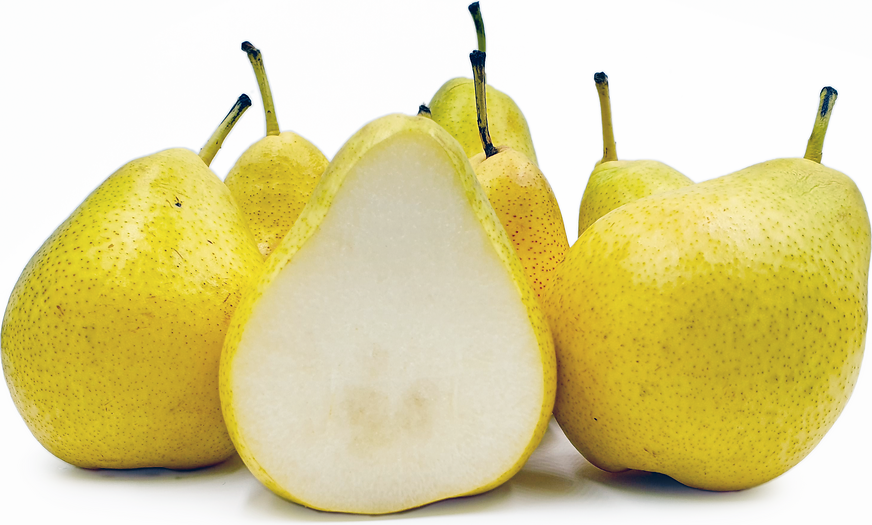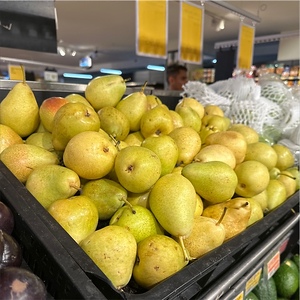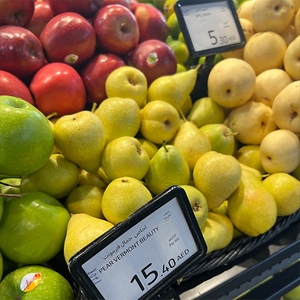


Vermont Beauty Pears
Estimated Inventory, lb : 0
Description/Taste
Vermont Beauty pears are medium in size and oblong in shape. The skin is an attractive greenish-yellow skin covered in gray lenticels. The name Forelle, which is likely the same pear as Vermont Beauty, means “trout” in German, referring to the gray speckles on the skin resembling trout skin. The texture of the white flesh is melting and buttery, generally fine-grained though coarser toward the center. The flavor is of high quality, aromatic with floral and vinous notes. The hardy tree grows vigorously and produces many fruits.
Seasons/Availability
Vermont Beauty pears are available in the fall through winter.
Current Facts
Vermont Beauty pear is a variety of Pyrus communis grown in South Africa and available in Indonesia. Vermont Beauty is also grown and sold elsewhere in the world, and may in fact be the same as the variety of pear known as Forelle.
Nutritional Value
Pears such as the Vermont Beauty are full of beneficial nutrients. One medium sized pear contains about 100 calories, along with vitamins B6, C, and K, potassium, calcium, and iron. The fiber in pears promotes a healthy digestive system and heart, while the antioxidants protect the body’s cells from damage.
Applications
Vermont Beauty pears are a versatile fruit, good for eating fresh out of hand and also for cooking and baking. Slice into fruit salads with blackberries, apples, and citrus, or bake into cakes and pies with spices such as cinnamon, ginger, cardamom, and vanilla. Pears can be stored in the refrigerator to keep them longer, but should be ripened at room temperature.
Ethnic/Cultural Info
Pears and apples are growing in popularity in Indonesian markets. The country receives over 100,000 metric tons of pear and apple imports each year. It has been found that consumers in Indonesia prefer pear varieties with firmer textures and a sweet flavor.
Geography/History
This pear is grown all over the world, including in South Africa, the United States, and South America. The trees grow better in warmer climates or with warmer exposures. The original Forelle pear was probably first grown in Germany in the 1800s, then made its way to England and the United States. The Forelle was widely grown in the eastern US. Around the same time, Vermont Beauty was first grown in a nursery in Vermont in the late 1800s, where the nurseryman named it Vermont Beauty. However, it is thought that this was simply a renaming of the already-existing Forelle variety.









